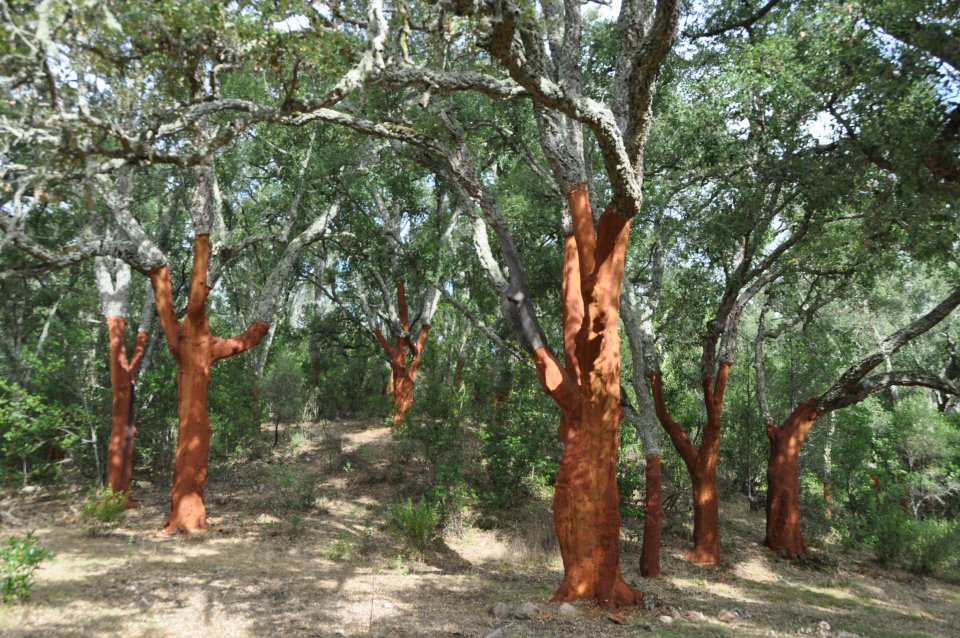
The aim is to provide a standard reference model to be used by public forest owners of cork oak woodlands to sell cork, both on the tree or in cork piles, through public tendering systems in Italy. The documents represent a good practice developed by the Agency Forestas on the basis of its long term experience in cork tendering systems that may be useful for harmonizing cork selling procedures across the country.
Cork oak woodlands in the Region of Sardinia represent around 83% of the national cover, with 140.000 ha of cork oak woodlands and wooded pastures (INFC, 2005), 17% of which are public (owned by municipalities or by the regional government). The Agency FoReSTAS manages around 15.000 ha of public cork oak woodlands (PFAR, 2008), aiming to protect and increase the resilience of cork forests in relation to climate and societal change, but also to enhance cork production and promote the competitiveness of the supply chain, with an orientation towards forest certification. The standardization of cork selling procedures through public tenders is a step towards process harmonization and certification.
The adoption of a common protocol for selling cork extracted in public forests, both on the tree and in piles, developed by the Agency FoReSTAS, allows valorisation of the cork product according to cork quality and quantity, definition of the minimum quality requirements which harvesters (if sold on the tree) must comply with in order to prevent damage to the cork regenerating tissue and the ecosystems, and collection of useful information to improve sustainable forest management of cork oak woodlands. Moreover, it allows public administrations to increase their negotiating power with respect to regional, national or international buyers and to define a fair price for the raw material, to contribute towards forest management costs taking into account site-specific conditions (road systems, slope, vegetation density, etc).
The standard is comprised of two parts: a technical phase to estimate the quantity of cork to be extracted differentiated by commercial quality categories (virgin cork, reproduction cork, etc.) and a second administrative phase containing all the documents and procedures needed to sell the cork through tendering systems. The standard needs to be fully applied in all articles by public administrations and can be adopted by private owners in contract agreements to define the quality requirements of cork debarking activities and the penalties that will be applied in case of breaches of the contract. The weighing of the product after harvesting allows owners to trace the exact amount of cork that exits the forest, in compliance with Forest certification standards (FSC, PEFC).
The standard contributes to the harmonization of cork selling procedures that, especially in public administrations, are not uniformly applied across the country. It provides guidance and good practice for workers, companies and public administrations. The extremely variable site and management conditions concerning forest typology (pure cork oak stands, mixed forest, wooded pastures, undergrowth, etc.), orography (flat, hilly, mountainous), infrastructures (forest roads, logging tracks, etc.) and cultural traditions of harvesters hamper standardization. Furthermore, the time and professional skills required for the analysis of the stands may hinder its wide-scale adoption.
The protocol could be used as a standard reference by other public administrations (e.g. municipalities) or even private forest owners, to maximize the ecological and financial benefits of cork harvesting. An improvement to the standard can be achieved on the basis of its wider adoption, in order to incorporate different technical and administrative needs of cork owners. Technical assessments could be improved by considering other variables such as the phytosanitary status of the stands. An anticipation of 6-12 months in the publication of the tenders with respect to cork extraction would greatly favour mid-term planning of processing industries, increasing the competitiveness of the value chain.
Marisa Cadoni: mcadoni@forestas.it https://www.sardegnaforeste.it
Pierre Pascal Tronci: piertronci@forestas.it https://www.sardegnaforeste.it
Sara Maltoni: smaltoni@forestas.it https://www.sardegnaforeste.it
Further information
Tendering procedure for cork harvested in the Province of Cagliari (Sardinia, Italy)
Regional Forest and Environment Plan (PFAR, 2008)
http://www.regione.sardegna.it/j/v/25?s=40571&v=2&c=1261&t=1&b=)
M. Cadoni
Team of cork harvesters during cork stripping in Sardinia (Italy) (M. Cadoni)
